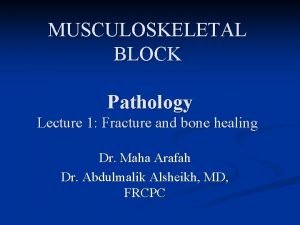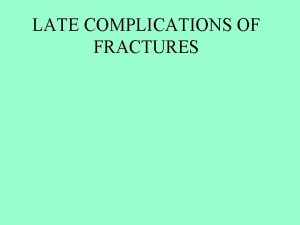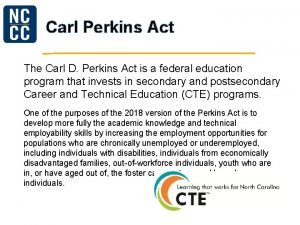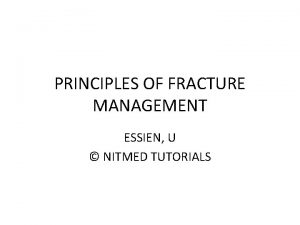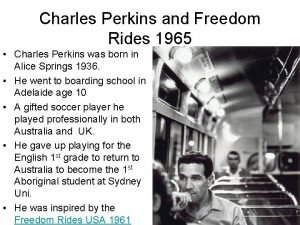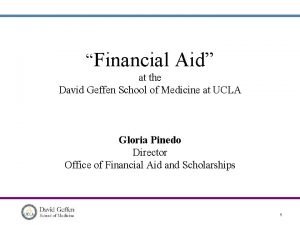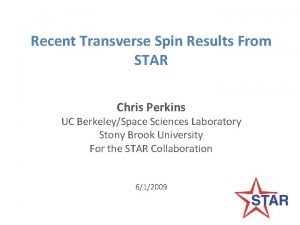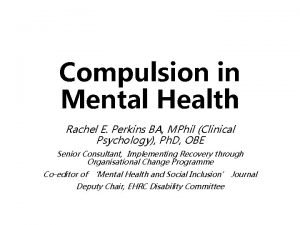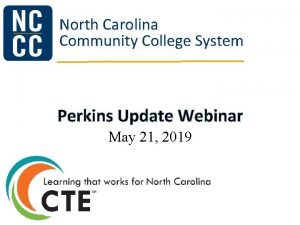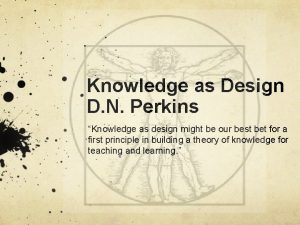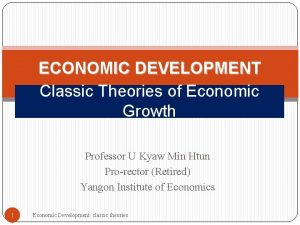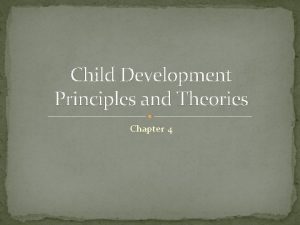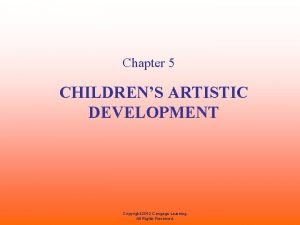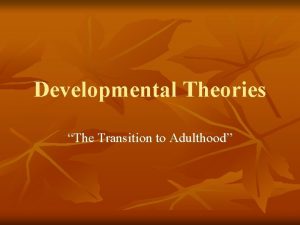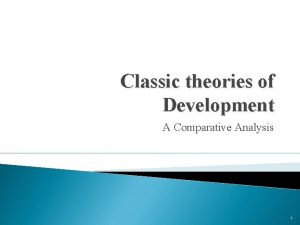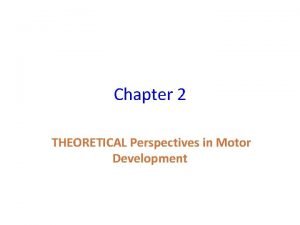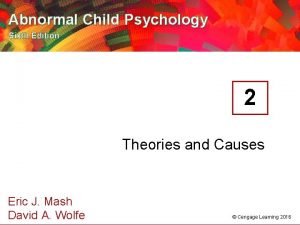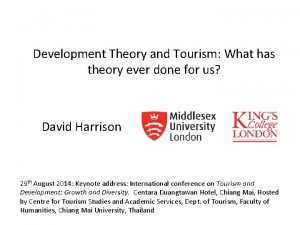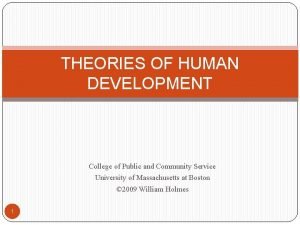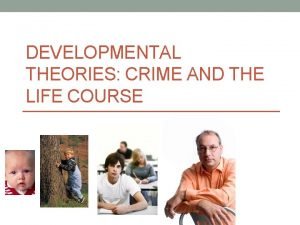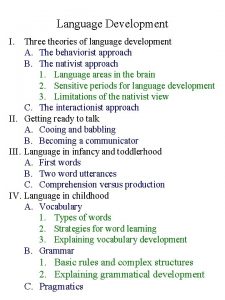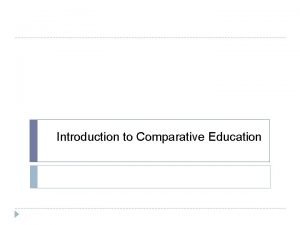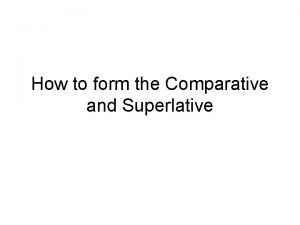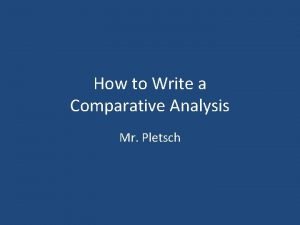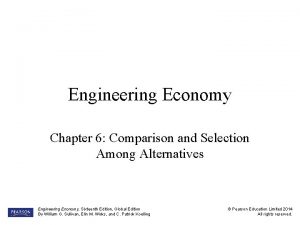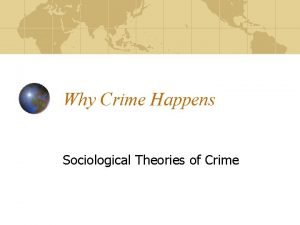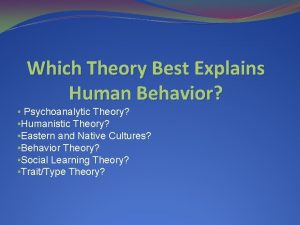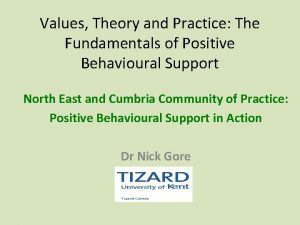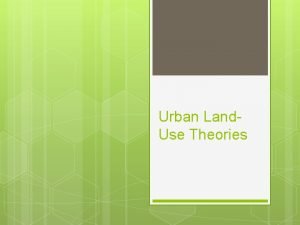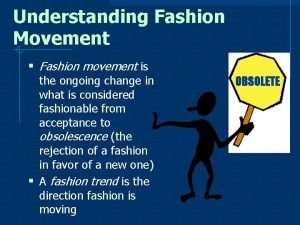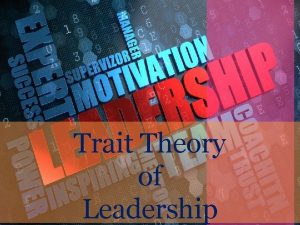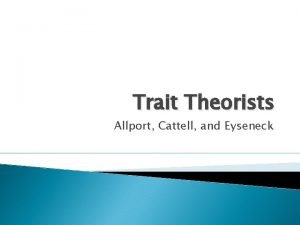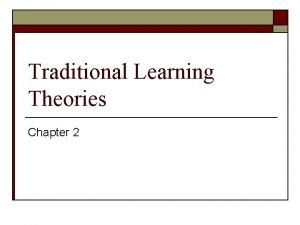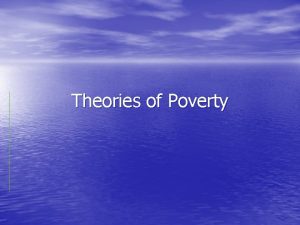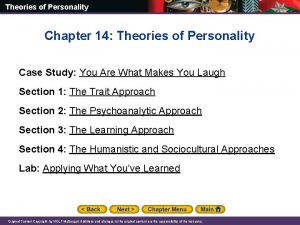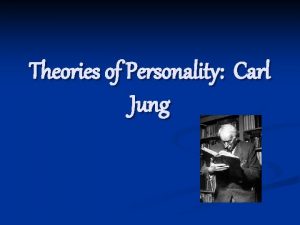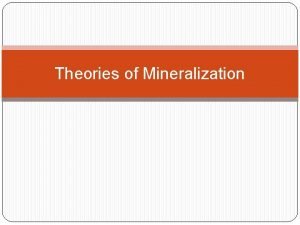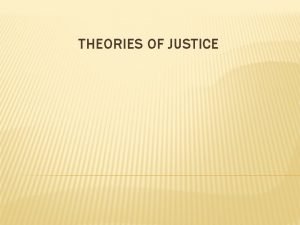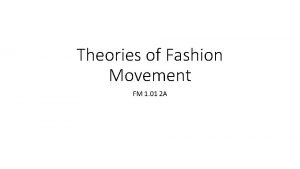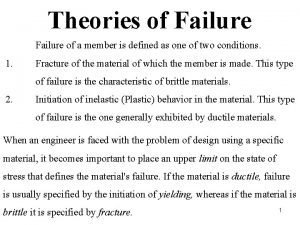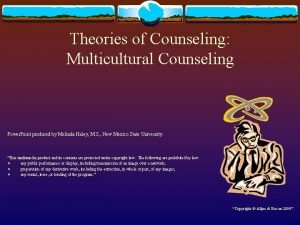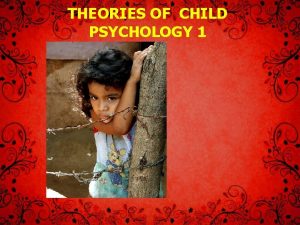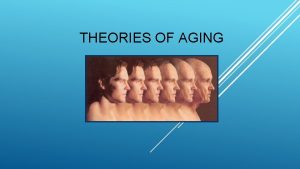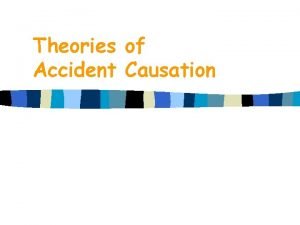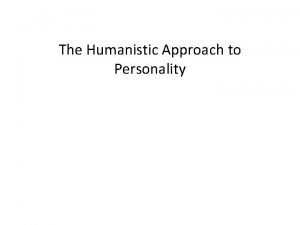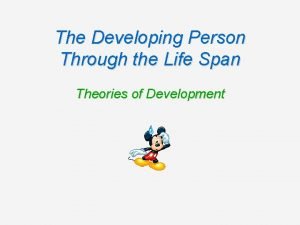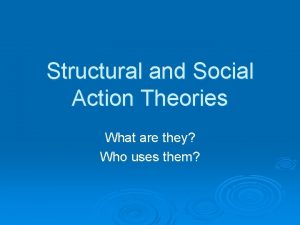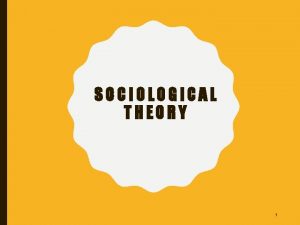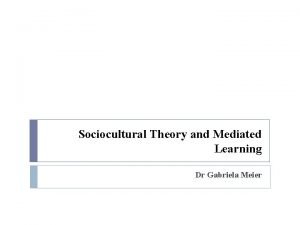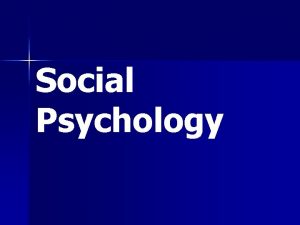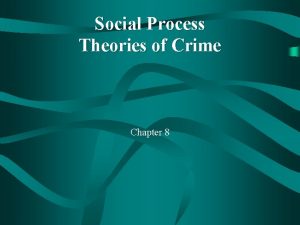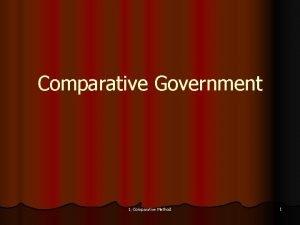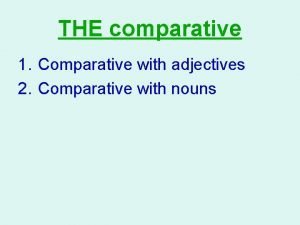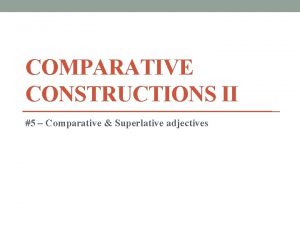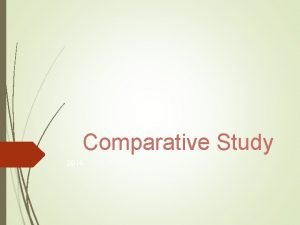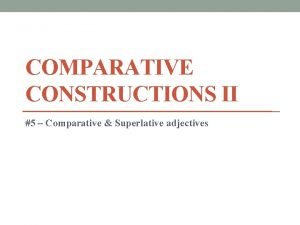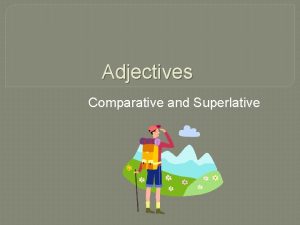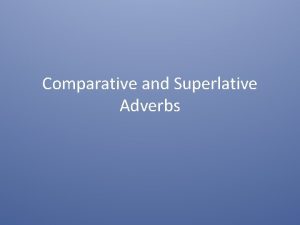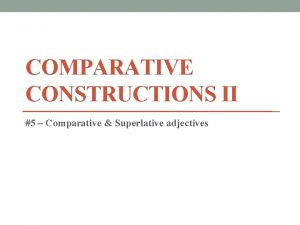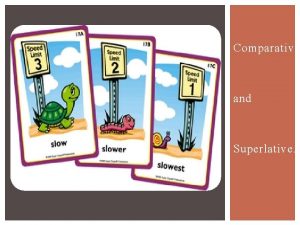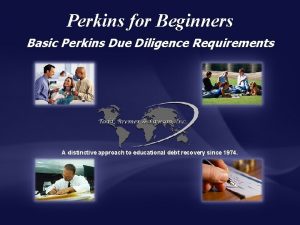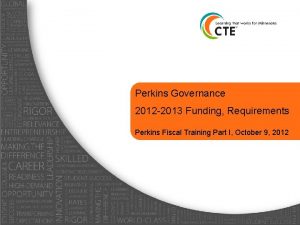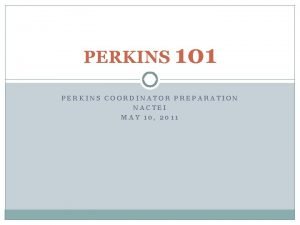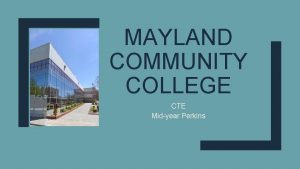Theories of Development A Comparative Analysis Perkins et














































































- Slides: 78

Theories of Development: A Comparative Analysis 第三講:經濟發展理論 Perkins et al. , Economics of Development, 5 th Edition, Ch 2 -3 Michael P. Todaro, Economic Development, 9 th Edition, Ch 3 Chapter 3 1





經濟發展的主要五大理論 Leading Theories of Economic Development: Five Approaches n n n 線性階段成長理論Linear-stages-ofgrowth model 結構變遷之理論與型態 Theories and patterns of structural change 國際依賴革命 International dependence 新古典自由市場之反革命 Neoclassical models 內生理論 Endogenous growth 6

線性階段理論 The Linear-Stages Theory n n n 1950 s 及1960 s早期 :認為發展的過程是經濟成 長一連串相繼不斷的階段所組成, 每一國家都會 經過這些階段。發展代表迅速, 總體的經濟成長。 羅斯托成長階段論 Rostow’s stages of growth 哈羅德-多馬成長模型 The Harrod-Domar growth model Obstacles and constraints Some criticisms of the stages model 7


Walt W. Rostow n n U. of Texas Austin 9

n n ( The five stages are: the traditional society, the pre-conditions for take-off into selfsustaining growth, the take-off, the drive to maturity, and the age of high mass consumption. ) 每年儲蓄在GNP的15 -20%的國家比儲蓄 較少的國家能成長更加快速。 所有的 業國家都經歷過起飛和自立成長階段。 10



Roy F Harrod n Oxford Univ. 13

n n Sir Roy F. Harrod, 1900 -1978 Roy Harrod taught economics, and produced his original contributions to the subject, at Oxford between 1924 and his retirement in 1967. Elected to a Lectureship at Christ Church Oxford in 1922, he then spent a few months at Cambridge with J. M. Keynes, with whom he remained in close touch for the rest of Keynes' life, and whose official biography he published in 1951. 14

n Evsey Domar 15

n n Evsey D. Domar, 1914 -1997 One might speculate perhaps that the circumstances of Evsey Domar's life conspired in his favor. A Russian-born, Manchurian-raised, MIT economist, Domar has made contributions in three main areas of economics: economic growth, comparative economics and economic history. His work on economic growth began with his 1944 model on government debt, which considered how economic growth can lighten the burden of the government debt. His major claim to fame, however, was in developing, parallel to Harrod, the now- famous "Harrod-Domar" growth model (1946) as a way of extending the Keynesian demand-determined equilibrium into the long run. 16


The Harrod-Domar Model (3. 1) (3. 2) (3. 3) (3. 4) 18

The Harrod-Domar Model (3. 5) (3. 6) (3. 7) 19

n n K/Y = I/Y = i = S/Y =s; -- g = s/k e. g. , k=3, $3 capital investment will bring $1 output every year. ICOR = incremental capital output ratio. 計劃人員: 計劃部門可決定g, 再看需要多 少i和s, 或決定i及s來決定g 實際運算時, K=Net Investment=Gross Domestic Investment (I) minus depreciation D. g= (s/k)-d 此時 s 為Gross Saving Ratio 20

21




Sir W. Arthur Lewis 1915 -1990 n Princeton University Princeton, NJ, USA 25




29



32




36


國際倚靠革命 The International. Dependence Revolution n n 1970年代 The neoclassical dependence model The false-paradigm model The dualistic-development thesis Conclusions and implications 38







新古典反革命(The neoclassical Counterrevolution, 1980年代) n n n 1 Challenging the statist model: 自由市場理論 Free market approach 公共選擇理論 Public choice approach 市場友善理論 Market-friendly approach 2 Traditional neoclassical growth theory Conclusions and implications 45




n n n 市場友善的發展策略Interactions in a market-friendly strategy for development (World Development Report 1991) : 投資於人民Investment in people 競爭性的微觀經濟Competitive microeconomy 穩定的宏觀經濟Stable macroeconomy, 全球性的連結Global linkage。 49








Theories of Development: Reconciling the Differences n n n Development economics has no universally accepted paradigm Insights and understandings are continually evolving Each theory has some strengths and some weaknesses 57

簡單兩缺口模型:世界銀行操 作模型的介紹 n A Simple Two-Gap Model: Introduction to World Bank’s Operational Model 58

n n n n 基本概念Basic concepts Y=C+I+X-M S=Y-C I-S=M-X=F 兩缺口理論Two-gap theory 儲蓄缺口Savings shortage 外匯缺口Foreign exchange shortage 技術勞 缺口─第三種Skilled labor shortage - third gap 59

n n n n n 外資有助於經濟成長Foreign borrowing promote economic growth g=(s+f)/k g= growth rate of Y s= S/Y f= F/Y k= K/C ratio Y/Y=(I/Y)( Y/I)=((S+F)/Y)/k g (Y per capita) = g (Y) - g (population) Keynesian model without debt Foreign capital and economic growth A simplified model - Keynesian model with debt module 60

61

n n 假設Some assumptions Exports (X) and investments (I) grow at a fixed rate per annum No inflation factor Total reserves does not bear interest receipts. 62

下週上課前 HOMEWORK n 上網作選擇題第三章 –www. aw-bc. com/todaro_smith / n 預習教科書Todaro第 5章:Poverty, Inequality, and Development 63

Chapter 4 Models Contemporary of Development and Underdevelopment 64

New Growth Theory: Endogenous Growth n n Motivation for the new growth theory The Romer model (4. 1) (4. 2) (4. 3) 65

New Growth Theory: Endogenous Growth n n n Motivation for the new growth theory The Romer model Criticisms of the new growth theory 66

Underdevelopment as a Coordination Failure n n Coordination failures occur when agents’ inability to coordinate their actions leads to an outcome that makes all agents worse off We’ll consider – “Big push” models – The ‘O-ring’ model 67

Multiple Equilibria: A Diagrammatic Approach n n Generally, these models can be diagrammed by graphing an S-shaped function and the 45º line Equilibria are – Stable when the function crosses the 45º line from above – Unstable when the function crosses the 45º line from below 68

Figure 4. 1 69

Starting Economic Development: The Big Push n n Sometimes market failures lead to a need for public policy intervention The big push: a graphical model – Assumptions 70

Starting Economic Development: The Big Push n n Sometimes market failures lead to a need for public policy intervention The big push: a graphical model – Assumptions – Conditions for multiple equilibria – Other cases in which a big push may be necessary 71

Figure 4. 2 72

Other Cases in Which a Big Push May Be Necessary Intertemporal effects n Urbanization effects n Infrastructure effects n Training effects Why the problem cannot be solved by a “super-entrepreneur” n 73

Further Problems of Multiple Equilibria n n Inefficient advantages of incumbency Behavior and norms Linkages Inequality, multiple equilibria, and growth 74

Figure 4. 3 75

Kremer’s O-Ring Theory of Economic Development n Implications of the O-ring theory 76

Concepts for Review n n n n Agency costs Agent Aid failure Asymmetric information Big push Complementarities Complementary investments n n n n Congestion Coordination failure Deep intervention Endogenous growth theory Linkage Multiple equilibria New growth theory O-ring model 77

Concepts for Review (cont’d) n n n O-ring production function Pareto improvement Pecuniary externalities Poverty trap Prisoners’ dilemma Public good n n n Romer’s endogenous growth model Solow residual Technological externalities Underdevelopment trap Where-to-meet 78 dilemma
 Comparative theory politics a level
Comparative theory politics a level Perkins formula fracture
Perkins formula fracture Non union types
Non union types Carl d. perkins act of 1984
Carl d. perkins act of 1984 Animals building homes
Animals building homes Lars perkins
Lars perkins 4 r's of fracture management
4 r's of fracture management As i was saying by augustus gluten
As i was saying by augustus gluten Bag lunch by dillard perkins
Bag lunch by dillard perkins Safa freedom rides
Safa freedom rides Bag lunch by dillard perkins
Bag lunch by dillard perkins Dgsom financial aid
Dgsom financial aid Perkins 4008-30tag2 technical data
Perkins 4008-30tag2 technical data Chris perkins physio
Chris perkins physio Rachel perkins clinical psychologist
Rachel perkins clinical psychologist Perkins geology museum
Perkins geology museum Perkins geology museum
Perkins geology museum Rachel perkins clinical psychologist
Rachel perkins clinical psychologist Cde perkins
Cde perkins Charlotte perkins gilman
Charlotte perkins gilman Cte funding texas
Cte funding texas Dorothy perkins stockists
Dorothy perkins stockists Nc perkins
Nc perkins Knowledge as design
Knowledge as design Tanner herrick
Tanner herrick Theories on growth and development
Theories on growth and development Classic theories of economic development: four approaches
Classic theories of economic development: four approaches Child development principles and theories answer key
Child development principles and theories answer key Kellogg's stages of drawing
Kellogg's stages of drawing Innateness hypothesis
Innateness hypothesis Klaus riegel dimensions of development theory
Klaus riegel dimensions of development theory Classic theories of development
Classic theories of development Motor learning theories
Motor learning theories Theories of normal and abnormal development
Theories of normal and abnormal development Neoliberal theory
Neoliberal theory Theories of human development
Theories of human development Crime and the life course
Crime and the life course Three theories of language development
Three theories of language development Define the concept of comparative education
Define the concept of comparative education Comparative and superlative calm
Comparative and superlative calm Causal correlational research
Causal correlational research Comparative development experiences of india and china
Comparative development experiences of india and china Historical background of community development
Historical background of community development Development that ended much development crossword
Development that ended much development crossword What are the three methods of pattern development
What are the three methods of pattern development How to write a comparative study
How to write a comparative study Methods of comparing alternatives in engineering economy
Methods of comparing alternatives in engineering economy Comparative analysis
Comparative analysis Sociological theories of crime
Sociological theories of crime Site:slidetodoc.com
Site:slidetodoc.com Theories and values of positive practice
Theories and values of positive practice Hoyt and burgess model
Hoyt and burgess model Pass the proton acid-base theories answer key
Pass the proton acid-base theories answer key Flop fashion cycle examples
Flop fashion cycle examples Trait theory of leadership
Trait theory of leadership Allport theory
Allport theory Traditional learning theories
Traditional learning theories 10 theories used in public relations
10 theories used in public relations What are the theories of poverty
What are the theories of poverty What does the psychoanalytic approach to personality teach
What does the psychoanalytic approach to personality teach Carl jung personality
Carl jung personality Matrix vesicle theory of mineralization
Matrix vesicle theory of mineralization Theories of justice
Theories of justice Human rights theory
Human rights theory Example of trickle-down theory fashion
Example of trickle-down theory fashion Theory of failure
Theory of failure Modern biological theories of crime
Modern biological theories of crime Theories of multicultural counseling
Theories of multicultural counseling Developmental stage theories
Developmental stage theories Age stratification
Age stratification Goals freedom alertness theory
Goals freedom alertness theory Maslow humanistic theory of personality
Maslow humanistic theory of personality A systematic statement of principles and generalizations
A systematic statement of principles and generalizations Nursing theories related to teenage pregnancy
Nursing theories related to teenage pregnancy Differences between structural and action perspectives
Differences between structural and action perspectives Sociological theories
Sociological theories Scaffolding theory bruner
Scaffolding theory bruner Social thinking and social influence
Social thinking and social influence Matzas
Matzas

